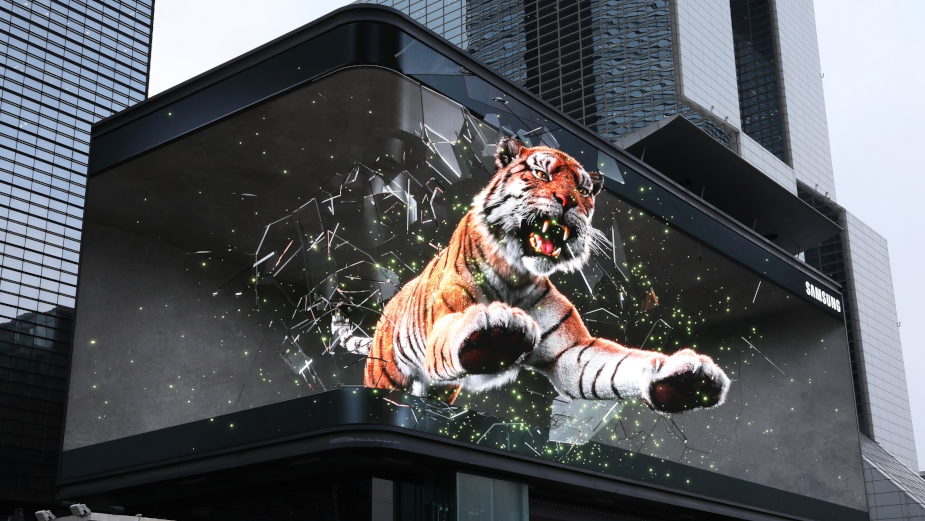By Gabriela Ferenc (Video Producer, A-Vision)
The world of modern comms and video specifically is evolving. This article will look at what the future holds for us in the world of video and communications; great examples of video marketing techniques and new trends.
According to Cisco, 82% of all global internet traffic this year is video. This proves that the moving image is the number one format for marketing and storytelling online. To back this up even further, in 2020, 9 out of 10 viewers said that they wanted to see more video from brands and businesses (HubSpot). But what does the future hold? What are the trends and video marketing techniques to look out for?
OUT OF THE BOX: 3D BILLBOARDS
3D billboards can be an effective and creative approach for advertisers. Not only are they visually spectacular and naturally draw attention to the product or the brand, but in a time when advertisers are fighting for the attention of consumers it brings instant awareness and brand recall.
Static images displayed on traditional billboards are unappealing. The public grows indifferent to the same old static ad displayed on billboards.
According to Ocean Outdoor’s neuroscience research, 3D billboards outperform static outdoor by 2.5 times, driving emotional impacts, memory encoding, and acting as a primer for other media. 3D billboards can become one of the key strategic choices for advertised brands to gain differentiation from their competitors.
IT’S (NOT) ABOUT TIME: LONG-FORM VS SHORT
The way we consume video has changed drastically during Covid. Video was the main mode of communication. We’ve all heard that viewers have a short attention span and videos should be short. But things are changing.
Video essays on YouTube are on the rise. Their popularity reflects our desire for more meaningful content online. People and Gen Z specifically want to understand things on a deeper level. Interestingly, TikTok increased the max length from 3min to 10min showing that long-form videos are increasing in popularity and demand.
You can use both forms of video. I find it works best if a long-form video can be sliced and diced for social purposes, which then drives it back to the long video. If a viewer was interested enough to watch the short video and then click to see the longer one, they are hooked and interested.
For marketers, deciding between short- and long-form video has been challenging. On one hand, consumers have short attention spans, and on the other, studies have shown that longer video can perform better. Both formats have value. When deciding between the two, marketers should first consider the goal of the video or campaign and do their research on the audience before starting creative processes.
Conclusion
What should a company do before they want to explore modern film?
It all starts with research and insight. Audit your content on all channels to check performance and understand your audience. Set smart objectives and set the brief. Only then can the creative process begin. Doing it this way ensures greater chances of success because it has been researched for specific purpose and audience.
 About the author:
About the author:
Gabriela has been in the industry for over 4 years but she has already managed 22K screen resolution video production and haptic table experience for Avaya, many events such as Aprtments.com NAA events all across the US, multilingual videos for WhistleB and many video shoots – even during CoVid. Gabriela brings a wide knowledge of all aspects of the creative process to the table, allowing for fast, efficient results that help bring our creatives to life. Her background stems from an enthusiasm for technology and creating, allowing her to be very hands on with tasks, understanding the ins and outs of how something works quickly and how a workflow can be adapted to help move on the process further. Her strengths are working with fine details and making sure the content is being delivered to the highest possible standard. She proves that learning through practice is a key to a successful development.


